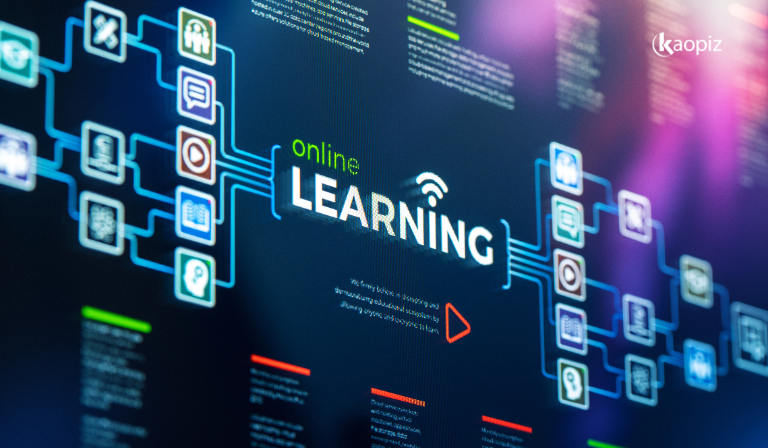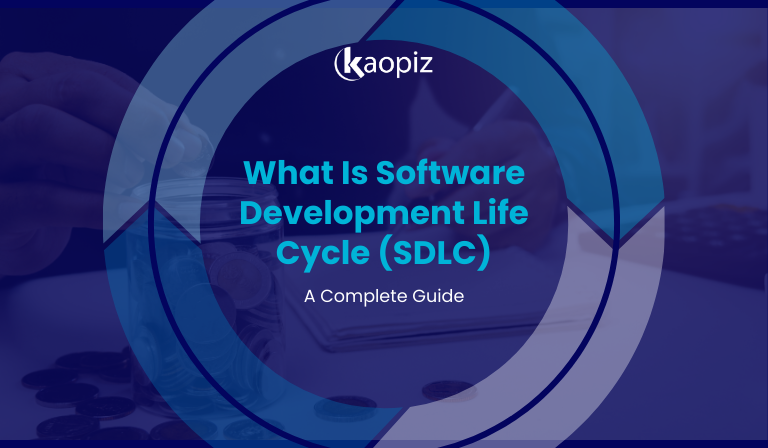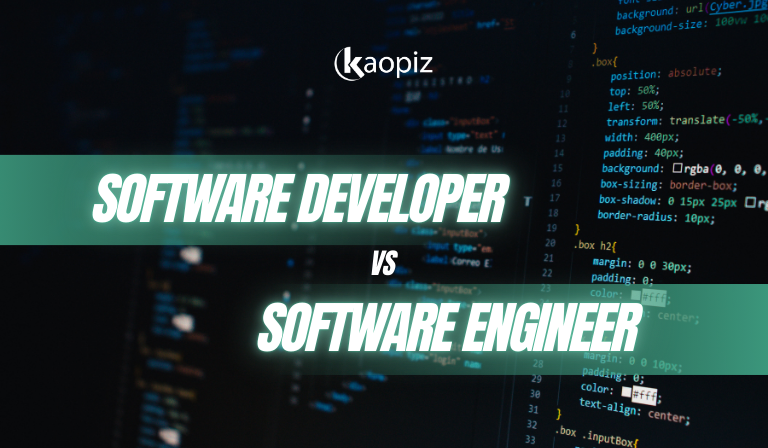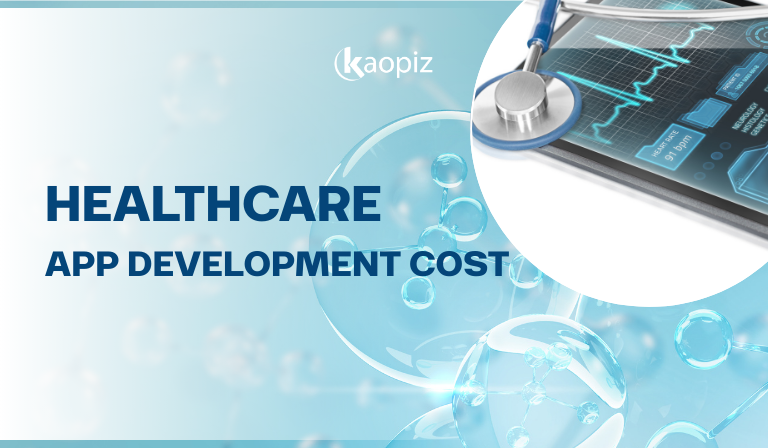Top 10 LMS Trends and Innovations to Watch in 2025
Learning Management Systems (LMS) are vital tools for organizations, schools, and universities. With digital transformation accelerating, LMS platforms must continuously evolve to meet the needs of diverse learners and ensure content is engaging and effective. Understanding the upcoming LMS trends will help businesses and educational institutions stay competitive, deliver improved user experiences, and enhance learning outcomes.
In 2025, we expect significant advancements in LMS technology, from AI-powered platforms to mobile-first solutions and immersive learning experiences. This article explores the 10 key trends in LMS technology to watch for in 2025, providing insights into how these developments will transform educational and corporate training landscapes.
Table of Contents
- LMS Market Statistics 2025
-
Top 10 LMS Trends to Consider in 2025
- Rise of AI-Powered Learning Platforms
- Emphasis on Mobile Learning and Accessibility
- The Expansion of Microlearning Module
- LMS and Data Analytics Integration
- The Shift Toward Cloud-Based LMS Solutions
- VR, AR, and Immersive Learning
- Blended and Hybrid Learning Models
- Social and Collaborative Learning
- Semantic Interoperability in LMS
- The Future of Compliance and Security in LMS
- Choosing a Development Team: Kaopiz’s Expertise
- Conclusion
- FAQs
LMS Market Statistics 2025
The LMS industry has come a long way since its inception in 1924, when psychology professor Sidney Pressey created the first electronic teaching device. Originally designed to streamline multiple-choice testing, LMS platforms have since evolved into comprehensive digital learning ecosystems that facilitate interactive and personalized education.
The latest market research (Meticulous Market Research) reveals that the LMS market trends will reach a value of $28.1 billion by the end of 2025. This rapid growth is driven by several key factors, including government initiatives, the shift to digital learning, the rise of AI and ML in LMS, and bring-your-own-device (BYOD) policies that enhance accessibility.

Recent studies forecast that:
As the LMS industry trends continue to evolve, organizations and educational institutions must stay ahead by embracing emerging trends that enhance learning experiences.
Top 10 LMS Trends to Consider in 2025
Since technology continues to transform digital learning, these latest LMS trends for 2025 are set to enhance engagement, accessibility, and efficiency in education and corporate training.
Rise of AI-Powered Learning Platforms
AI in learning management systems is transforming this industry, making it one of the top LMS trends for 2025. AI-driven LMS solutions enhance learning experiences by offering personalized learning paths, automating administrative tasks, and delivering real-time feedback to improve engagement and efficiency.
a) Personalized Learning Paths
AI-powered LMS platforms analyze learner behavior, preferences, and progress to create customized learning experiences. This adaptive learning approach enables students and employees to study at their own pace, focusing on areas where they need improvement.
Additionally, AI tutoring systems provide real-time assistance and interactive learning experiences, simulating human-like interactions that boost comprehension and retention.
b) Automated Administrative Tasks
AI tools automate tasks such as grading, content recommendations, and performance analysis. This automation reduces the administrative burden on educators, allowing them to focus on delivering quality instruction and enhancing student engagement.
As AI continues to evolve in LMS platforms, its role in adaptive learning, data-driven insights, and automated content delivery will further enhance digital education. Additionally, governments worldwide are establishing AI guidelines for education, ensuring ethical AI use, data privacy, and effective integration into e-learning environments.
Emphasis on Mobile Learning and Accessibility
The increasing adoption of mobile devices has led to a surge in Mobile Learning Trends, and 2025 will see even greater emphasis on creating mobile-first and accessible LMS platforms.
a) Mobile-First Design
LMS developers are prioritizing mobile compatibility, ensuring that courses and assessments are accessible anytime, anywhere. This trend is crucial for remote and hybrid learning models that have become more prevalent post-pandemic.
Features such as push notifications, offline access, and responsive design ensure that learners remain connected and engaged, even when they are not in front of a computer.

b) Accessibility Enhancements
Ensuring that LMS platforms comply with accessibility standards like WCAG (Web Content Accessibility Guidelines) is essential for inclusivity. This development enables learners with disabilities to access educational content seamlessly.
The Expansion of the Microlearning Module
Microlearning is rapidly becoming one of the key e-learning trends, and its role will continue to grow in 2025 and beyond. By delivering concise, bite-sized lessons, LMS platforms cater to modern learners who prefer short, engaging, and easily digestible content. This approach enhances knowledge retention, boosts engagement, and improves learning efficiency across various industries.
a) Benefits of Microlearning in Corporate Training
Microlearning is particularly beneficial in corporate training environments, where employees need to quickly acquire new skills without disrupting their work schedules. It also allows for quick updates in the curriculum to align with evolving industry standards.
b) Integration with Gamification
Gamification elements like quizzes, badges, and leaderboards can be integrated into microlearning modules to increase engagement and motivation among learners.
LMS and Data Analytics Integration
The integration of data analytics into LMS is transforming e-learning by providing deep insights into learner behavior, course effectiveness, and performance trends. As LMS platforms become more AI-driven, institutions and businesses can leverage real-time analytics to enhance engagement, improve learning outcomes, and optimize training programs.
a) Learning Analytics Dashboards
Advanced LMS platforms now offer analytics dashboards that track various metrics such as completion rates, engagement levels, and assessment scores. These dashboards enable educators and administrators to adjust learning strategies based on real-time data.
b) Predictive Analytics for Personalized Learning
Predictive analytics tools within LMS platforms forecast learner performance and identify at-risk individuals. By analyzing these trends, the system can recommend personalized interventions to support struggling students or employees.
The Shift Toward Cloud-Based LMS Solutions
The move toward Cloud-Based LMS solutions continues to dominate the industry due to their scalability, flexibility, and cost-effectiveness. This trend is expected to grow further in 2025 as more organizations recognize the benefits of cloud technology.
a) Benefits of Cloud-Based LMS
Cloud-based systems allow organizations to scale up or down based on the number of users without incurring high infrastructure costs.
These systems also provide easier integrations with other software tools like CRMs, HR systems, and third-party e-learning resources, enhancing the overall learning experience.

b) Enhanced Security Measures
As cloud-based LMS platforms expand, so do concerns about data security. In response, LMS providers are implementing advanced encryption, multi-factor authentication, and compliance with regulations such as GDPR to protect user data.
VR, AR, and Immersive Learning
Virtual Reality (VR), Augmented Reality (AR), and immersive learning are outstanding learning management system trends that enhance engagement and retention. These technologies create interactive, hands-on experiences, making learning more effective for education and corporate training.
a) Virtual Reality for Experiential Learning
VR-powered LMS platforms offer realistic simulations for industries like healthcare, aviation, and engineering. Learners can practice skills in risk-free virtual environments, such as medical procedures, flight training, or leadership development. Virtual classrooms also enable remote collaboration and interactive learning experiences.
b) Augmented Reality for Interactive Learning
AR enhances real-world learning by overlaying digital elements onto physical surroundings. 3D models, real-time guidance, and gamified training make learning more engaging. AR is widely used in medical training, technical maintenance, and corporate skill development.
Blended and Hybrid Learning Models
Blended and hybrid learning models are becoming essential in LMS-driven education and corporate training. These approaches combine online and in-person learning, offering flexibility, engagement, and improved outcomes.
a) Blended Learning
Blended learning integrates digital content with face-to-face instruction, allowing learners to study at their own pace while still benefiting from instructor-led sessions. It enhances engagement through videos, quizzes, interactive modules, and live discussions.
b) Hybrid Learning
Hybrid learning offers a more fluid mix of online and offline learning, giving learners the choice to attend sessions virtually or in person. This model is widely used in higher education and professional training, catering to diverse learning preferences.
Social and Collaborative Learning
Social and collaborative learning is one of the current trends in e-learning and transforming LMS platforms by encouraging peer interaction, knowledge sharing, and real-time collaboration. In 2025, LMS solutions will integrate more social learning features to enhance engagement and teamwork.
a) Peer-to-Peer Learning
LMS platforms now offer discussion forums, group chats, and knowledge-sharing communities, allowing learners to exchange insights and collaborate on projects. This fosters a more interactive and engaging learning environment.
b) Live Virtual Classrooms & Webinars
With built-in video conferencing, breakout rooms, and real-time collaboration tools, LMS platforms enable live discussions, mentorship programs, and instructor-led training sessions. These features improve engagement and help learners apply concepts in real-world scenarios.
Semantic Interoperability in LMS
Semantic interoperability is becoming a key focus in LMS development, ensuring that educational data and content can be seamlessly shared and understood across different platforms. As LMS adoption grows, the need for standardized data exchange is more critical than ever.
a) Why Semantic Interoperability Matters
LMS platforms often use different data structures and formats, making it difficult to transfer learning materials, track student progress, or integrate with third-party tools. Semantic interoperability establishes a common framework that allows systems to communicate and interpret data consistently.
b) Benefits of Semantic Interoperability in LMS
- Seamless Content Sharing: Enables smooth course material transfers across institutions and organizations.
- Improved LMS Integration: Facilitates connections between LMS, HR systems, CRMs, and other learning tools.
- Enhanced Learning Analytics: Ensures that data-driven insights remain accurate and comparable across platforms.
The Future of Compliance and Security in LMS
Compliance and security are becoming increasingly important in LMS development, especially with regulations tightening around data privacy and e-learning platforms.

a) Ensuring Regulatory Compliance
LMS platforms must adhere to regulations like the General Data Protection Regulation (GDPR) and the Family Educational Rights and Privacy Act (FERPA) to ensure data privacy and protection.
Compliance measures also extend to accessibility standards, ensuring that LMS platforms are designed inclusively for all learners.
b) Data Security Enhancements
Security features such as encrypted communication, secure APIs, and regular system updates are now standard in LMS development. By implementing these features, organizations can protect user data and maintain trust.
Choosing a Development Team: Kaopiz’s Expertise
To stay ahead of the curve and implement the latest LMS trends, partnering with a trusted development team is crucial. Kaopiz, a leader in LMS development, offers tailored solutions that align with these emerging trends.
Expertise in AI-Powered and Cloud-Based LMS
Kaopiz specializes in AI development and cloud-based solutions that cater to the evolving needs of educational institutions and corporations.
Focus on Compliance and Security
With expertise in data privacy regulations and security protocols, Kaopiz ensures that all LMS platforms adhere to global standards, providing secure and compliant solutions that clients can trust.
Custom Development for Enhanced Engagement
Whether it’s integrating gamification features, mobile learning capabilities, or advanced data analytics, Kaopiz offers customizable solutions to build cutting-edge LMS platforms that enhance learner engagement and performance.
With deep expertise in AI, cloud technology, security, and learner engagement, Kaopiz empowers businesses and educational institutions with scalable, secure, and innovative LMS platforms tailored to their needs.
Conclusion
As we look ahead to 2025, LMS platforms will continue to evolve, integrating AI, mobile-first solutions, and data analytics to offer more engaging and personalized learning experiences. Cloud technology and security will also play crucial roles in shaping the future trends of LMS. By staying informed about these trends and partnering with experts like Kaopiz, organizations can leverage these innovations to create impactful, cost-effective learning solutions.
Ready to elevate your learning experience? Contact Kaopiz today for a consultation and build an LMS that drives engagement, performance, and success!
FAQs
How Long Does It Take to Implement an LMS?
The LMS implementation timeline varies depending on the organization’s size and needs. On average, it takes between 4-6 months, including assessment, selection, data migration, configuration, training, and rollout.
How Much Does It Cost to Implement an LMS?
The cost of an LMS can range from $10,000 to $250,000 annually, depending on factors such as features, the number of users, and customization requirements. Mid-sized institutions typically allocate a budget of $40,000 to $100,000 for the first year. For tailored pricing that fits your budget, consider reaching out to trusted partners like Kaopiz, which offers customized LMS solutions to meet your specific needs.
How Do I Choose the Right LMS for My Organization?
Selecting the right LMS depends on factors like scalability, customization options, compliance needs, and integration capabilities. Organizations should assess their learning goals and choose a solution that aligns with their requirements.




















